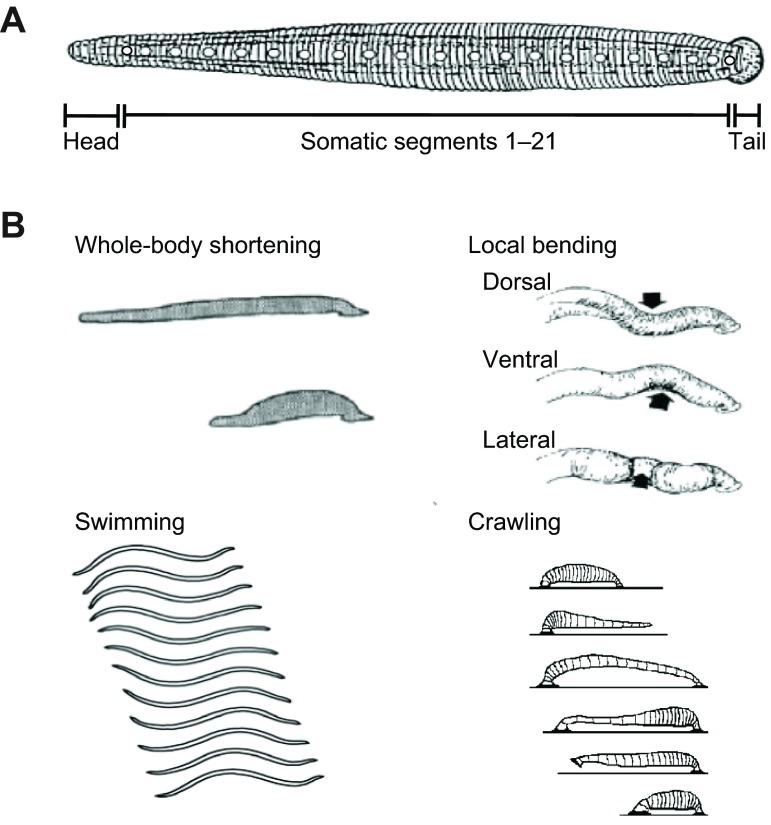Fig. 1.
Anatomical and behavioral drawings of medicinal leeches performing behaviors in response to tactile stimulation. (A) Schematic of a leech illustrating four head segments, 21 somatic segments and seven tail segments. The white ovals on the dorsal midline are beads sewn onto the skin in the middle of each somatic segment. For our experiments, we confined stimulation to somatic segments 3–19. (B) Schematic of leech behaviors: whole-body shortening (a rapid bilateral shortening along the body length); local bending (a localized – fewer than three segments – unilateral shortening on the side of the body stimulated, combined with a passive lengthening on the opposite side that results in a localized ‘U-shaped’ bend of the body away from the stimulus); swimming (detachment of front sucker followed by dorsoventral undulatory cycles that moved backward along the leech's body, propelling the animal forward); and crawling (detachment of the front sucker, followed by an elongation of the body, reattachment of the front sucker, contraction of the body, followed by detachment of the rear sucker and its reattachment at a more forward site).

